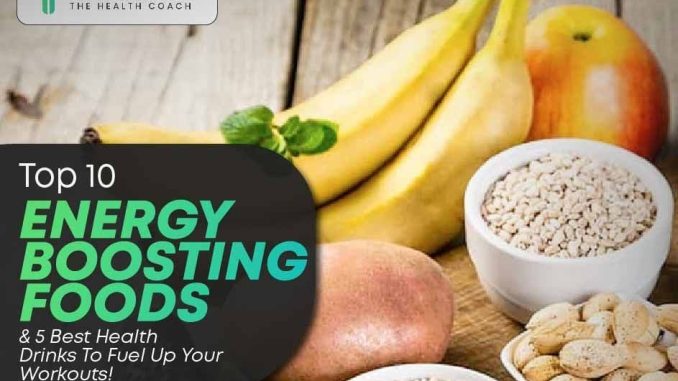
Many people approach eating with the simple goal of satisfying hunger, equating the absence of an empty stomach with having met their body’s needs. Yet eating for fullness and eating for energy are not the same thing. Foods that quickly fill the stomach may provide temporary relief but can leave the body sluggish, unfocused, or craving more soon after. By contrast, eating for energy means fueling the body in a way that sustains physical stamina, sharpens mental clarity, and supports productivity throughout the day. For professionals managing demanding schedules, the difference can be dramatic: it determines whether the afternoon is powered by steady focus or hindered by fatigue and distraction.
The quality of food is at the heart of this distinction. Processed foods that are high in refined carbohydrates and added sugars tend to trigger rapid spikes in blood sugar, followed by inevitable crashes. These highs and lows not only drain energy but also affect mood and concentration, creating a rollercoaster effect that undermines performance. Eating for energy means choosing foods that provide a slower, steadier release of glucose into the bloodstream. Whole grains, legumes, vegetables, and lean proteins deliver nutrients that the body metabolizes more gradually, keeping energy levels stable. Much like a business relying on consistent revenue streams rather than unpredictable windfalls, the body thrives when fuel is steady and reliable.
Protein plays a particularly important role in energy management. It does more than build muscle; it slows the absorption of carbohydrates and helps maintain stable blood sugar levels. Starting the day with eggs, yogurt, or nuts, for example, creates a foundation of sustained energy rather than a quick burst followed by a slump. Professionals who have experienced the difference between a sugary breakfast pastry and a protein-rich meal know firsthand how nutrition can dictate the trajectory of their mornings. The choice determines whether meetings are approached with clarity or clouded by fatigue before lunch even arrives.
Healthy fats are another key element in eating for energy. While fat has historically been vilified, certain types—such as those found in avocados, olive oil, nuts, and fatty fish—are essential for brain function and long-lasting fuel. They help keep you satiated while also supporting focus and memory. Including these fats in meals can prevent the kind of mid-afternoon crash that leaves many reaching for coffee or sugary snacks. In professional terms, these fats act like strategic reserves: they provide reliable backup energy that keeps systems running smoothly when demands are high.
Hydration is equally critical, though it is often overlooked. Even mild dehydration can cause fatigue, headaches, and reduced concentration. Many people mistake thirst for hunger, reaching for snacks when what their body actually needs is water. Drinking consistently throughout the day supports efficient digestion, circulation, and nutrient transport, all of which are essential for maintaining energy. For busy professionals, keeping a water bottle nearby can be as impactful as any dietary change, much like ensuring clear communication channels keeps a team aligned and effective.
The timing of meals also influences energy levels. Large, heavy meals can leave the body feeling sluggish as blood is redirected toward digestion. Eating smaller, balanced meals or snacks throughout the day helps maintain steady energy without overwhelming the system. This does not mean constant grazing, but rather thoughtful planning that aligns fuel intake with energy needs. For example, having a balanced lunch before a major presentation provides mental stamina, while relying on fast food or skipping the meal altogether can leave energy depleted at the very moment it is needed most. Timing meals strategically is similar to allocating resources in business—deploying the right support at the right time creates maximum impact.
Equally important is recognizing how emotional states influence eating patterns. Stress, boredom, or fatigue often drive choices that satisfy cravings rather than provide energy. A pastry or candy bar may feel comforting in the moment, but it rarely delivers lasting fuel. Developing awareness of these triggers allows individuals to respond more intentionally, choosing foods that support long-term energy instead of short-term relief. This parallels professional decision-making, where reacting impulsively to pressure often leads to poor outcomes, while measured, strategic choices ensure steady progress.
Eating for energy also requires a shift in perspective: food is not just about avoiding hunger but about fueling performance. A well-balanced diet supports not only physical stamina but also sharper thinking, steadier moods, and greater resilience under pressure. Professionals who treat meals as opportunities to optimize energy rather than as quick fixes often find they can handle workloads more effectively, with fewer lapses in concentration or motivation. In this way, nutrition becomes less about restriction or discipline and more about empowerment.
Ultimately, eating for energy is about aligning food choices with the body’s natural rhythms and needs. Whole foods, balanced macronutrients, hydration, and thoughtful timing all work together to create a steady foundation of fuel. The difference between eating just to feel full and eating to feel energized can shape not only daily performance but also long-term health. For professionals striving to balance demanding schedules with sustainable well-being, this approach reframes meals as strategic assets. Much like successful businesses thrive on steady resources and consistent planning, individuals thrive when their diet provides energy that is stable, reliable, and aligned with their goals. By prioritizing energy over mere fullness, people can unlock greater productivity, sharper focus, and a more resilient body to carry them through the challenges of both work and life.
Would you like me to also prepare a shorter 400–500 word version of this article that could be shared in a professional newsletter or as a LinkedIn wellness insight?